In December 2016 I wrote a piece about “my new old house”. Three years later in December 2019 it became my “old new old house” when I left Kalemie. It’s taken me this long to get round to writing another piece about it, perhaps because I knew it would evoke strong feelings of nostalgia and homesickness. Even though it was not love at first sight by any means, when you invest large amounts of time and energy in caring for and restoring a dwelling place, you form a close bond with it. Inside and out, my house gradually cast off her sad, neglected stoop and became a welcoming and cheerful sanctuary, not just for myself and my partner, but for various friends/colleagues and short-stay visitors. 2017 saw the most intensive works, against the backdrop of an escalating recurrent inter-ethnic conflict that spread throughout the province. I stopped blogging about my work and life in DRC at this point. At the time, there were very few appetizing eateries in Kalemie or indeed many cultural opportunities, so renovating the house became a major project and much-needed antidote to work. And indeed, the project continued well into my third year.
As I love cooking (and eating), it was natural that the gloomy kitchen with its old rotten wood and dark green walls was the first to be renovated once the windows, doors and mosquito netting had been repaired around the whole house and a new shower and toilet installed. As impatient as ever, I didn’t want to wait for the housing company, Filtisaf (which I wrote about in my previous piece), to agree to get going. If I’m honest, I preferred to work privately with my Congolese colleagues from the engineering section both for the design and the implementation. A more expensive but much more gratifying option, and I was delighted with the results. In the event, I ended up leaving B to project manage the work while I went on leave in February 2017. M the carpenter and P the mason worked in tandem to make and fit new units and work surfaces, with white and light blue tiles on and around them and a combination of pale blue and mostly off-white paint on the high walls. A long shallow shelf ran from the left of the cooker for all the dried herbs and spices I brought back from London. The two cupboards on the sink wall had glass-paned doors and were separated by a third open unit with a rail across the top. I regaled it eventually with a full complement of cooking utensils hanging from chrome S hooks (courtesy of Ikea). We even had a make-shift cocktail bar by the window, consisting of a deep wooden shelf and two tall stools which tucked neatly underneath it. It wasn’t perfect, of course: some of the cupboard doors stuck a bit due to M going overboard with the varnish and no slick, self-closing drawers. But it was bespoke and locally resourced and made, so I was more than pleased. Z the electrician installed four new bright lights (for energy-saving bulbs) three quarters the way up the wall at equal intervals, coming to the rescue of the single and rather feeble existing ceiling light. Being on leave, I hadn’t had the stress of getting the workmen to coordinate their appearances on site, which I learned was rather eye-watering! On the recommendation of a female Congolese colleague, I found a local seamstress, who came to the market with me to choose fabric for a long, blue and white checked gingham curtain she sewed, beautifully lined in plain white cotton at the back to cover the whole length of the half-glass paned door to the guards’ quarters (no more “Bonjour Madame” as I shuffled bleary-eyed and incapable of speech into the kitchen to make my early morning tea!) She also made a net curtain to cover the window by the sink. J, in her late thirties, had found herself widowed less than 18 months previously due to sudden illness and had several children, including young ones. I was hugely grateful both for her sewing talents and her gracious patience in trawling around the markets and shops in the heat of a Saturday noon. Her serenity was intriguing and I was in awe of her strength as she leapt deftly up onto work surfaces to take measurements. She went on to sew curtains for other rooms as well as clothes for me.
Coming back to the kitchen, I retained the huge dark wooden dresser along the length of one wall for good storage space, having the carpenter to give it a lick of varnish (he liked varnish a lot). The real anomaly in the kitchen was the red painted floor. Red doesn’t usually match with blue, but somehow I decided I quite liked the cheerfulness of the red and so just got it repainted the same colour by A the painter (the same applied to the lounge and bedrooms). A few months later, the old fridge finally gave up the ghost and I replaced it with a brand new, state-of-the-art (ha ha) chrome one.
A the painter did a lot more painting inside and outside over the coming months, including the bathroom, whose UN standard-issue blue was replaced with pale pink paint with neutral, beige-based tiles around the bath and sink. Okito the plumber installed a large new sink and came many times for other odd repairs, as well as more major jobs on pipes outside, including a vent pipe for the cesspit. My decision to tile over the red painted concrete floor was hastened when workmen sent from Filtisaf to unblock the toilet thought it a good idea to dig a big hole in the floor! I came home from work during the lunch hour and gasped to find a mound of rubble and earth in the middle of the bathroom. It turned out the cleaning tablet hooked onto the rim of the toilet bowl had been flushed down and blocked the bend. Anyway the end result was a good makeover.
Water was delivered to the (rather undersized) water tank two or three times a week by my MONUSCO engineering colleagues, which worked fine until my French “Life Support” colleague (who organized the rota) was replaced in 2019. No fun arriving home late and sweaty from a field mission and discovering water hadn’t been delivered and had run out and that the Jerrycan reserves had also been used by the guards. Back in London, I still find myself economizing on water. Another small carpentry job when the old ladder up to the water tank broke. I never got round to organizing a larger tank; that’s for someone else to do.
The only other job I got Filitsaf to do inside the house (they did later do a good job of replacing the garden perimeter fence) was to paint the lounge and two of the bedrooms. I should have learned my lesson after the bathroom episode. Once again I left B in charge of managing this while I was away, and once again, he had a nightmare keeping them on the job and getting them to finish before I returned. To my (not immediate) amusement, I found that instead of removing the pictures from the walls, they just painted around them! Otherwise it was all freshened up. I replaced the garish pink curtains in the bedrooms with the decent plain beige linen ones from the lounge, which in turn were replaced by new ones which J sewed for me from traditional colourful Congolese fabric known as “pagne”. I covered the shabby but sturdy dining table with a colourful yellow and turquoise waxed tablecloth I found at Entebbe airport and had six wooden and upholstered chairs made bespoke in a carpentry workshop at the bottom end of town, the same place that made a beautiful four poster bed to fit the extra large mattress I had inherited from the previous occupant, an Iraqi colleague (one of the decent things among the pile of stuff he “flogged” me!)
Turning my attention to the outside, I got a welder from MONUSCO to work with the mason to build a brick barbecue in the garden, and painted it the same terracotta colour as the walls on the patio and the random concrete block in the middle of it (I never found out its original purpose); and I used the same colour to once again replace the UN standard-issue blue on the external walls of the house.
In general, whilst the garden greened up, my guard’s ongoing efforts over three years at growing vegetables and herbs were not highly rewarded. With the exception of the maize, one crop of Swiss chard and a single butternut squash, the most we got from the garden were herbs such as celery, parsley and basil. The soil proved to be difficult to coax and my guard swore that the green flies from the trees above were the main culprit. As work became more and more consuming, we kind of gave up on the garden, just letting J continue with his efforts, joking that these must be the most expensive herbs in the world! At least he kept the garden and the paths well-swept and helped to prop up the flimsy bamboo fencing around the perimeter when the wind threatened to blow it flat (which it did one time, making me realise that the fencing was purely a barrier between the house and the road that provided privacy but certainly no real security). Other outside improvements included a concrete shed with vents to house the generator and a proper shelter for the guards next to the front gate.
In September 2017 we had a barbecue to celebrate the general spruced up-ness of the house and garden, inviting all the workmen, even though not all of them could make it. It was a Sunday afternoon and I was surprised and somewhat deterred by the swarms of flies that appeared and dive-bombed our plates. I counted a total of 24 on one plate. I learned that the end of the dry season is particularly bad for flies. My Congolese colleagues seemed completely non-plussed as they tucked into the goat kebabs and fresh fish from the lake. A good number of barbecues ensued over the next two years or so, with my Civil Affairs team and other colleagues and friends, including the fantastic Uruguyan water purification colleagues and later Uruguyan and Indonesian troops, as well as visitors from Goma and elsewhere. I wished that my dear colleague and friend Marion, whose successive apartments in Goma provided me with “home from home” on so many occasions when I passed through, could have come to stay more than the one time, and that she could have brought the lovely dancing Flavio with her. For the future….
Christmas 2017 was a time of much celebration and enjoyment of the renovations. The kitchen especially, from where a veritable feast was produced for Christmas lunch for six, sat on the spanking new and comfortable dining chairs (just as well, as a new sofa for the lounge had not been sorted). While the rain bucketed down outside, we got very merry and I ended up playing my tenor recorder and giving a rendition of the Welsh national anthem, which probably bemused the neighbours. Around this time, we appreciated the frequent dinner company of Yoko, irrepressible Japanese colleague from IOM, who was stuck in the MONUSCO “guesthouse” (where I stayed for the first three months in Kalemie in 2016) and who much appreciated the chance to cook fresh food in a homely kitchen. How we loved her stir-fries – and she bequeathed us her rice cooker when she left, all too prematurely. And dear Libia from Uruguay, who made us laugh so much, dancing in her army boots and with her limited language other than Spanish, yet expressing so much and putting us to shame with her efforts to learn Swahili. We three women spent New Year’s Eve 2017-18 dancing wildly around the house to Cindy Lauper and finishing off Yoko’s bottle of Yamazaki 12 year old whiskey. Yoko dressed a couple of (frozen) chickens beautifully in Japanese style for the barbecue, only for us to discover they were actually off when we came to eat. Thankfully Libia had rustled up some homemade pizza. When the hour of midnight approached, she showed us a New Year’s Eve tradition of throwing a bucket of water over the garden to represent the sloughing of all negative energy and events from the previous year. Somehow I ended up flipped on my back and soaking wet, amidst a lot of hilarity. Two of my four guards on duty that night took great delight in joining in and we repeated the ritual the following New Year’s Eve, which, however, wasn’t quite the same without these wonderful women.
It was early 2019 before I finally got round to getting a sofa made for the lounge. My friend Liz, who was dying back in Somerset, insisted that it was not too late. And she was the Queen of home-making. An L-shaped affair which suited the space perfectly. I chose a smart, tartan-style fabric, hoping it wouldn’t clash too much with the curtains, and made sure there were no pieces of wood at the top of the back cushions. I sent her photos and she highly approved. My only regret was that I hadn’t done this earlier because, together with the cheerful fluffy new rug and bespoke wooden coffee table, it totally transformed that half of the lounge.
If anyone had told me in 2016 that over the next couple of years, I would be so mad as to carry things like curtain poles from John Lewis (I’m not subsidized by the UK taxpayer I assure you!) and large floor lamps from Ikea in my suitcase, I wouldn’t have believed them. “Démenagement” (meaning house move) is the word B used to describe my “kitchen sink”-style travel. It felt like Christmas every time I returned from leave with supplies both of the edible and non-edible kind.
I tried to get Filtisaf to reimburse me for the renovations and improvements – after all it was an investment in their property, not mine! They did in some small part and paid for a few things like the dining chairs and sofa. But they found it an affront that I had not trusted them to do all the works and that my UN colleagues had “profited” from it. At a certain moment, they flatly refused to “contribute” any more (I had deducted a small amount from my rent each month for a year), and no amount of arguing with them would change their mind. For my part, as the rent was not onerous, I decided that this would be part of my attempt to be a contributor and improver and not a taker, in a place where so many had already taken so much. Nonetheless, they admitted that the house had been totally transformed and by the time I left, they were openly happy about that. Madame O who was the real mover and shaker in Filitisaf, even had tears in her eyes when she popped round to say goodbye and I was having a barbecue with B, my guards, Maman E, my “bonne”, and my Italian colleague who was about to take over the house. “You’re all family here I see”, she said.
Nine months on, I still miss sitting of an evening on the old canvas deckchairs in the covered veranda called the “buanderie” (laundry), exhausted from the day and downing liberal amounts of G&T (how colonial, sorry). Was it an omen that both deckchairs gave out within a short time distance from each other towards the end of 2019?
I miss bringing a tray of home-made rice pudding and coffee for Sunday morning breakfast in bed; I miss the hearty brunch spreads on Saturdays. I miss the family feel of the guards and my cleaning help (I can’t find a good way to avoid using the “maid” translation of “bonne”), who sometimes drove me mad with their constant demands and issues. I’m not talking about the tragic deaths of their infant children or the string of illnesses and calamities like houses collapsing in the rains; but rather the requests to intervene in arguments among them or injustices regarding their work contracts with the security company. The intensity of working on the house alongside a demanding job over these few years, was exhausting, and B got fed up of Saturday morning lie-ins interrupted by yet more repairs or improvements. But it was deeply satisfying, even now as I look back and see the photos.
I can’t say I miss the noise around the house: the cacophony of funeral wakes which kept us awake all night with ear-splitting amplified music; of evangelical preachers whose ranting before daybreak was broadcast from loudspeakers in the centre of town (I would love to have seen them locked up instead of the teenage boys I visited in the prison); of the roaring of the generator during power cuts; and even of the grating cawing of crows in the garden and the bleating (more like wailing) of next door’s goats when desperate to have a lie-in. But I do miss the fullness of expending one’s life energy in all directions and hoping that it’s somehow making a small difference for some fleeting moments. I’m sure I will return once more to this frenzied life, at least for a season, while I am still fit and able.
I have reflected a lot on why I feel it matters to whom you hand over a house that you have really made a home. I suppose quite simply because you have invested yourselves, part of your souls in it. And that part stays behind. Serendipitously, as the date for beginning my special leave approached, a new colleague arrived in Kalemie who was looking for just such a home. He’s Italian and loves cooking too. And he is kind and decent, so will treat the guards and Maman well. This matters.
In grateful memory of Okito the plumber, who sadly died in July 2019.
And in grateful memory of my darling Lizzie, who showed me how to build a nest.


















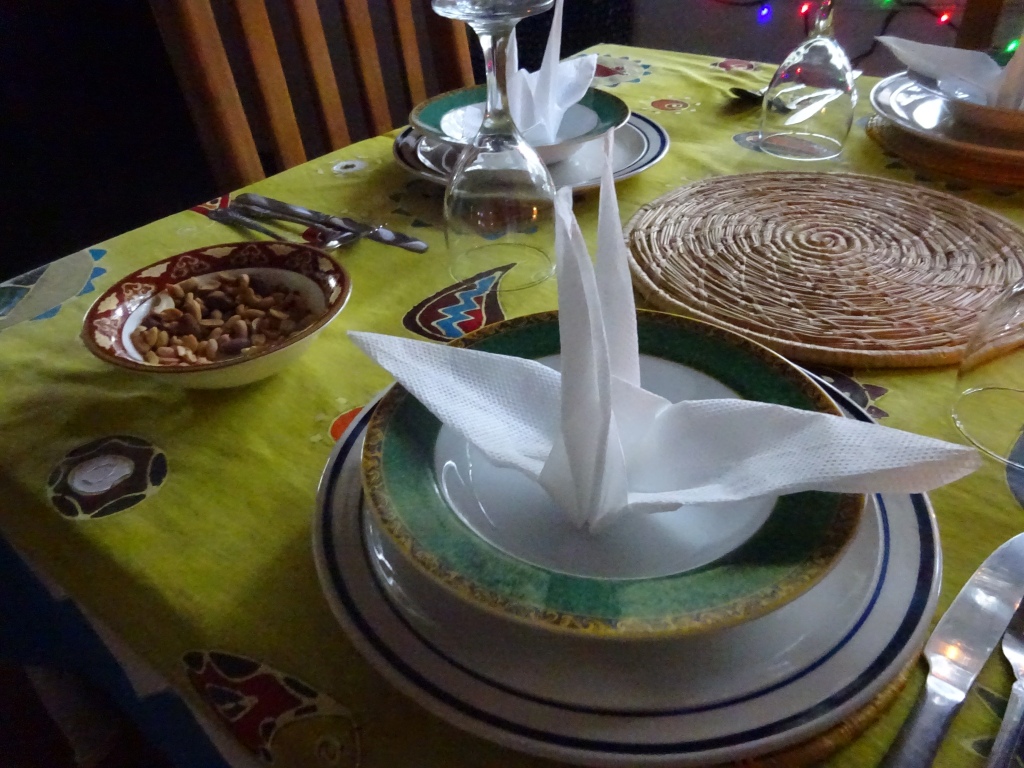








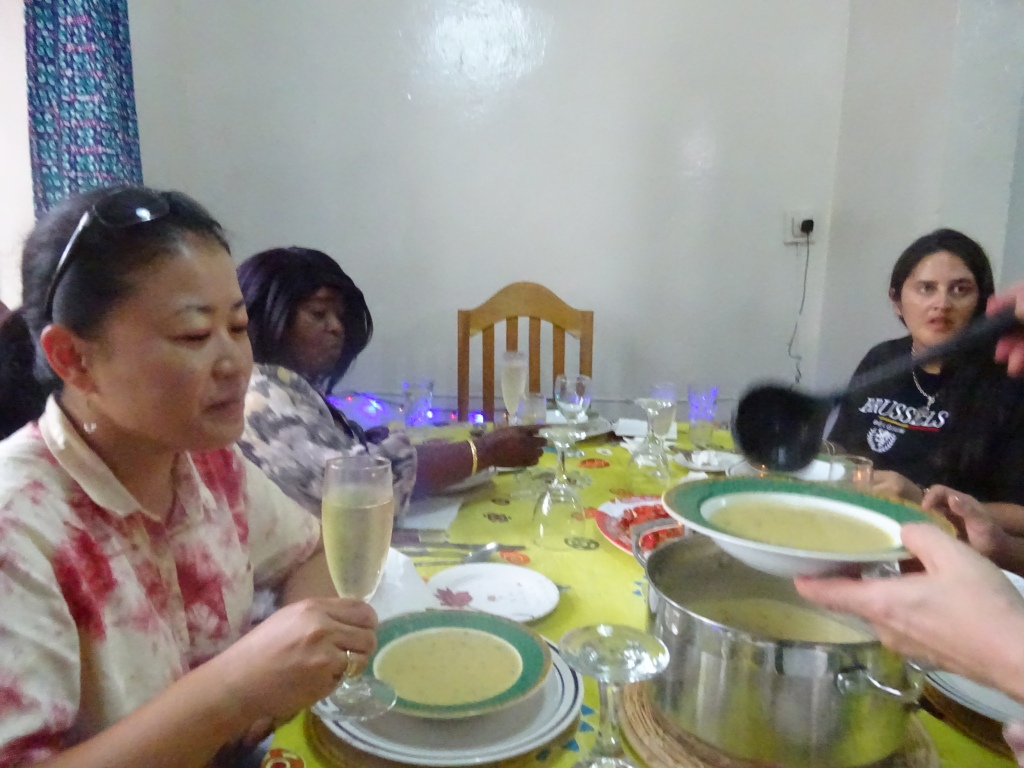






























































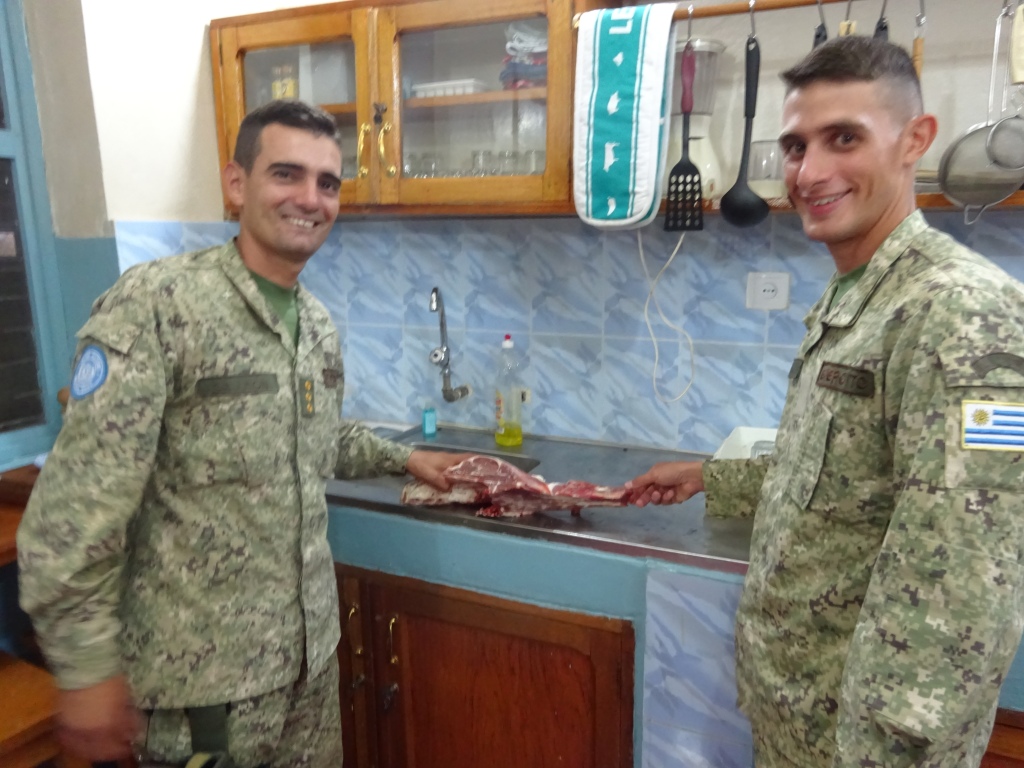














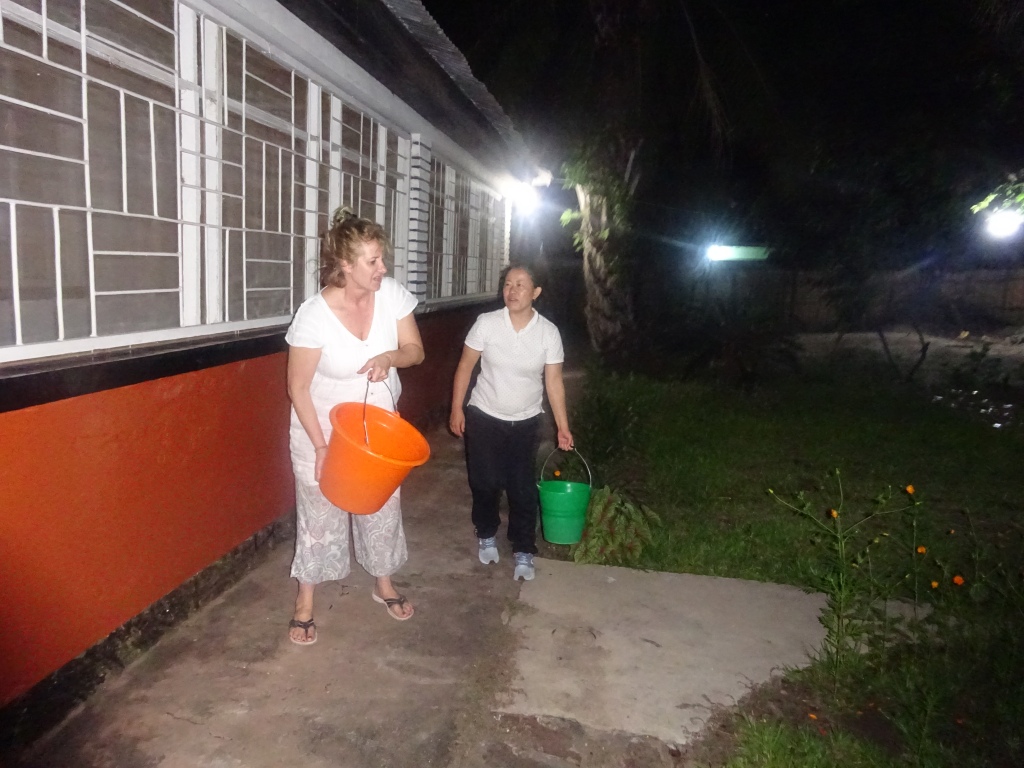








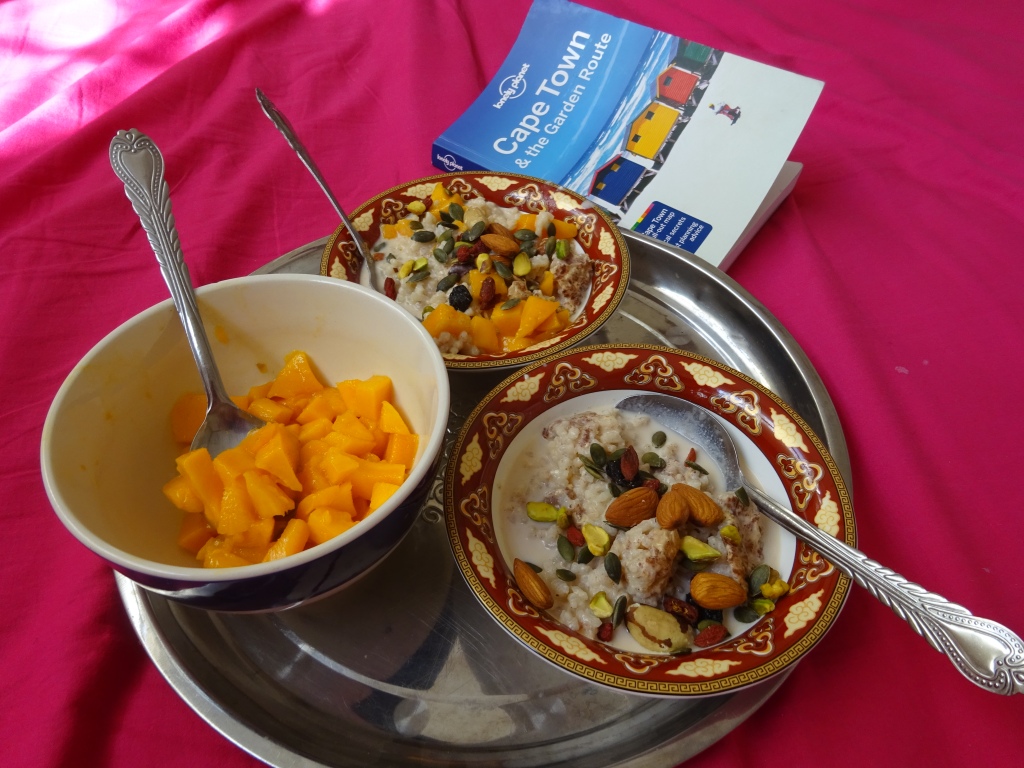

Hi Julia How amazing to hear from you after all this time. Thanks very much for sharing your life and the photos. If you are in Brockley anytime let’s have coffee Eileen
LikeLike
Thanks Eileen. Lovely to hear from you too! Have been thinking of you recently as reading an excellent book about Dag Hammarskjöld. Yes would love to have coffee in Brockley. Will be in touch when I’m back from my holiday next week xx
LikeLike